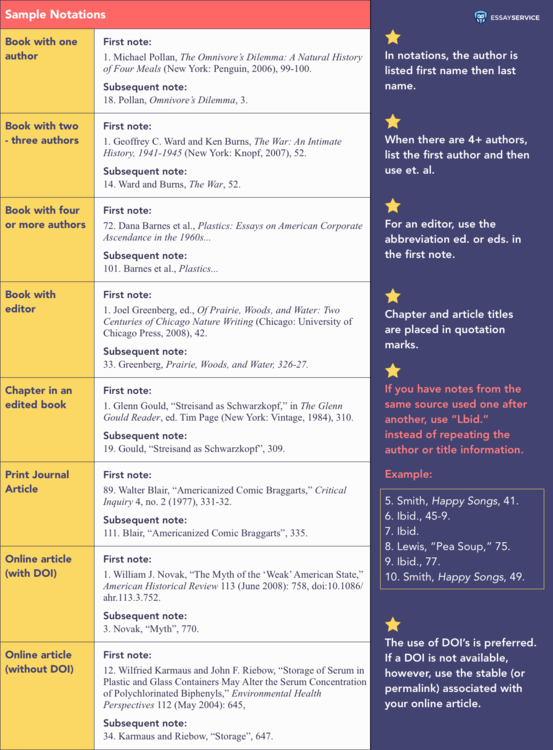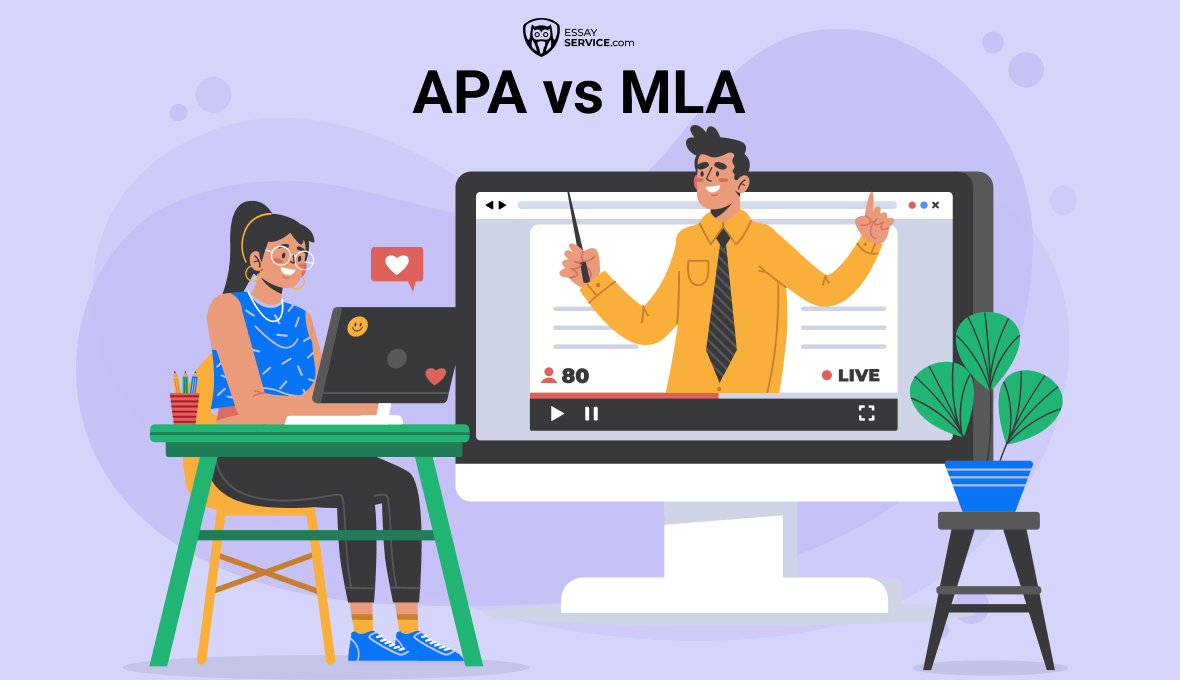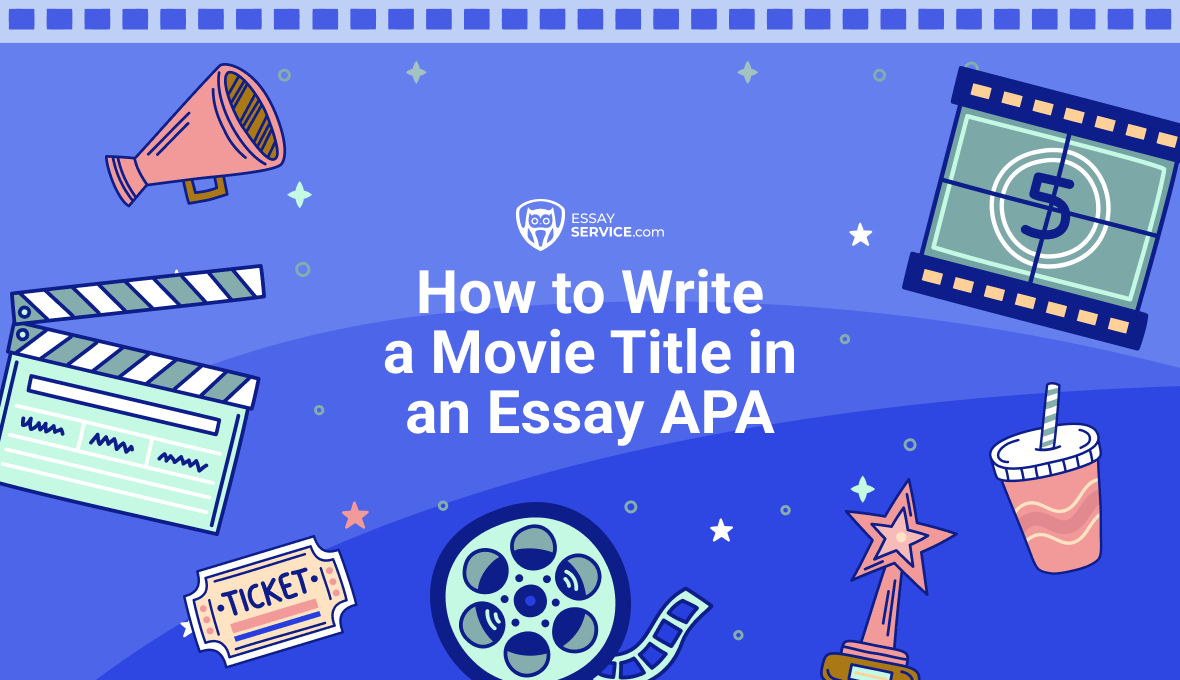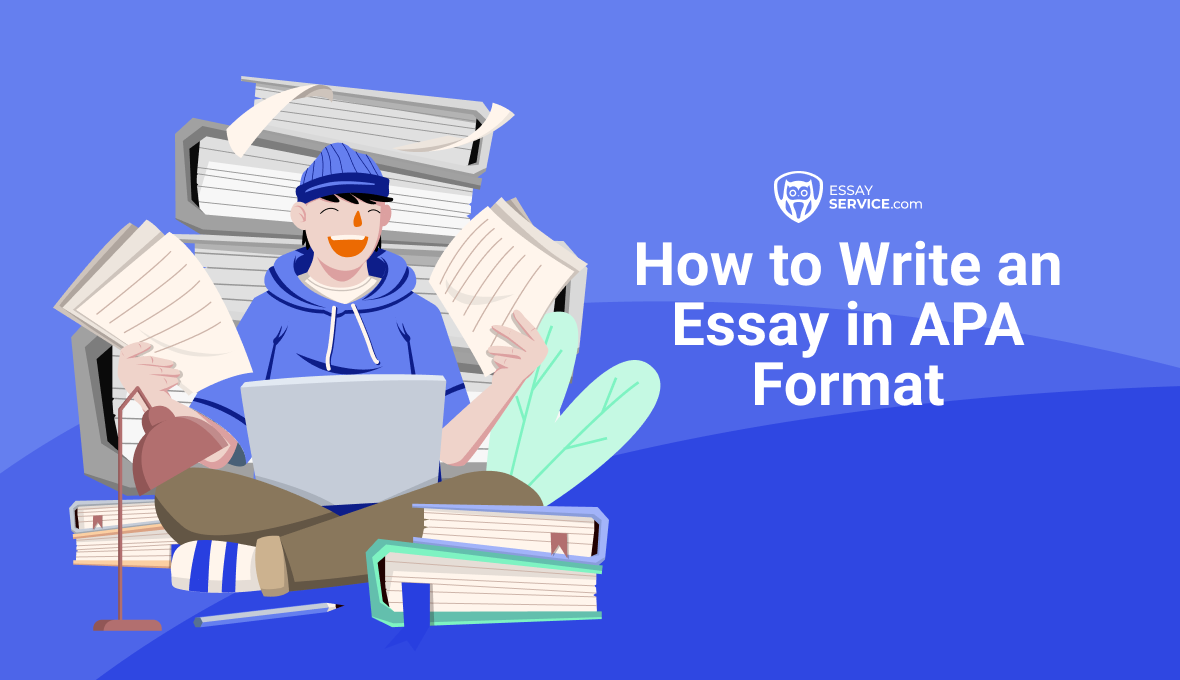.png)
How to Use Chicago/Turabian Style?
Found a great essay topic, and all you need is a reliable Chicago style citation guide? Or are you just looking for a simple Turabian format example? Regardless of what you are looking for, the answer is right here, in our online paper writing service Chicago style citation guide! Explore this in-depth guide that highlights all the predominant elements so you can get that A+ with almost no effort at all.
What Is The Chicago Style Citation And The Turabian Format?
Before getting into all the juicy details, it is essential for students and professionals alike to understand what the Chicago style citation format encompasses as well as the requirements of the most recent edition. As we all know, whenever a student is writing a research paper or any kind of essay, they are required to reference all their sources to avoid plagiarism. Despite how frustrating that can sometimes be, it is vital to steer clear of plagiarism at all costs, and one way to do it is to order essays from our service.
Currently in 2017 we are concerned with the Chicago style citation format as explained in the 16th edition as well as the Turabian 7th edition. But what does that mean for us? There is no need to panic as the new versions have not the overall concept of this style that much. Unlike its cousins, the APA Formatting Style or MLA Formatting Style the Chicago Manual of Style, also known as the Turabian citation style, makes use of two citation systems. Luckily students will have to choose or will be told by the instructor, which of the two best fit the particular essay.
The first system that we will be looking at is called the Notes-Bibliography system and is often shortened as N.B. by the Chicago style citation format. The subjects it is mostly encountered in are the arts, literature and history. The second system is referred to as the Author-Date System which is quite similar in content but is structured differently and mainly concerns the social sciences.
Is this a little bit too much to handle at first glance? Buy an essay paper online on our website now, or learn how to write an essay in Chicago-style citation format with our guide.
Why Use The Chicago Style Citation Format In The First Place?
Having done a quick Google search, it is not hard to tell that this referencing style isn’t exactly the most popular one out of the bunch. So what makes this one stand out from its cousins and what are the benefits of using it if there are even any, to begin with?
- Its degree of depth is often described as both a strength and weakness. However, it is an invaluable tool in a historical analysis for that fact alone. The weakness aspect concerns a researcher's ability to backtrack to the original source through the endless list of references and footnotes.
- Its level of detail surpasses the APA and MLA citation formats. Being able to use a multitude of complex sources with the new simplified Chicago style referencing format is a definite plus.
- Freedom to choose between using a print copy or the online version of a particular source. As with most referencing styles nowadays the Chicago style citation format now allows for its users to incorporate sources in all kinds of forms and origins.
- Choose between two distinct referencing systems. Distinguishing itself from the APA and MLA single style structure the Chicago style citation format allows students to pick whichever option suits them best.
- The new Chicago style citation format is also available in the form of an online generator. It is strongly advised to be familiar with its requirements by reading this Chicago style citation guide before using such tools.
- Avoid being accused of plagiarism by mastering this formatting tool. Knowing how to put together a substantial list of references is just the first step in this journey.
Overall it is not that much different than any other referencing method required of students for their assignments. Nonetheless, the most significant benefit from the all seems the ability to choose between one of the two systems to help keep text plagiarism free. In the following section, we will have a closer look at their elements as well as how the student should incorporate them by using the Chicago style citation format correctly.

What Categories Can It Be Broken Down Into?
As previously mention now we will examine the basic skeleton of the Notes-Bibliography System as well as the Author-Date System that students can choose to use as their Chicago style citation format.
Notes-Bibliography System
By choosing N.B. students should include:
- A footnoe or endnote each time a source is used, whether it be a direct quote, summary or paraphrasing.
- The first citation in an essay that uses a bibliography can use the shortened Chicago style citation format.
- The sources used should then also be listed as footnotes at the end of the page.
- Compile all the references together and display them in the form of endnotes at the end of the entire document or at the end of each chapter according to what is best suited to the Chicago style citation format required.
- Relevant information required for any source: Author’s Full Name, Source Title, Facts of Publication, Chapter, Page Number.
- If the student has to use the Chicago style citation format in a paper that does not need to have a bibliography, then they must include the full details of each author when referencing a source.
- Have a superscript number individually corresponding to each reference. It should be used in a text after the sentence has ended or interlinked with the clause of a different source.
- When citing the same source numerous times, it is recommended to use a shortened Chicago style citation format.
- If one of the works you are citing has a bibliography of its own, there is no need to quote all of them in yours, except those that are included in your work.
- If a source has no bibliography of its own then the student should provide full details regarding this particular reference according to the Chicago style citation format.
- Footnotes or endnotes must have the required full-sized number, which is followed by a period and then a space.
- Students may choose to make use of the Ibid. abbreviation. It stems from Latin meaning “in the same place”. This is just one of the many tools that students have at their disposal while applying the Chicago style referencing format.
Author-Date System
Overall this choice is quite similar to the N.B. system as far as its core elements are concerned. However, below we will list some of the key differences that separate the two.
- The reference list is done differently as it emphasizes the author and year of publication of the sources.
- Have the date and month of publications available to include in the bibliography.
- This new prioritization is also visible in the in-text citations, paraphrases or summaries presented.
- Different use of punctuation and reference list entries when displaying one’s bibliography and in-text citations.
- Full bibliographical information is only provided at the end.
- Prefers the use of parenthetical references instead of numbered quotes and references.
- Both systems make use of an alphabetically ordered bibliography as indicated by the Chicago style citation format.
These are the most predominant features that encompass using the Chicago style citation format. For specific examples on how to reference each type of source correctly check the following section.
Chicago Style Citation Example
As far as theory is concerned we have pretty much covered it, nonetheless talking about something is not the same as doing it. Thus, understanding how the practicals interact with this concept when applying the Chicago style citation format, we come to realize that we will be looking at two different types of referencing structures. Having used various types of bibliographies, it is pretty obvious that despite some requiring sources to be formatted and presented differently they all contain the same general information. In most cases that revolves around the author, editor, title, book edition, article number, website link, page number, chapter, etc. and all this information is listed alphabetically according to the author's last names. If a source is lacking in one of these descriptors, use at least some form of descriptive phrase so that the audience knows what is being brought into the discussion.
In this section we will also show Chicago style citation examples from works that choose to complete the assignment without using a bibliography, meaning that most of the focus will be placed on in-text citations and short forming them correctly. If you want to know more about Chicago style citation you can visit our write my essays service or search us in the Internet like: "pay someone to write my essay".
However, the first thing we will examine is all the standard elements these two systems have in the Chicago style citation format.
- Both use all the general elements ( author, title, page number, etc.).
- In each of the Chicago style citation format bibliographies, the author’s name must be inverted by placing their last name first and then separating the last and first name by using a comma. For example, John Snow becomes Snow, John.
- The titles of chapters, articles, poems, etc. should always be placed in quotation marks according to the Chicago style citation format. Do not forget that titles of books and journals are to be italicized at all times.
- When referencing the year of publication fora source, it should be listed after the publisher or the journal’s name.
- Regardless of what style you have chosen to use as your Chicago style citation format the period is used to separate all significant elements within the bibliography.
Now that we have a crystal-clear idea of what the standard elements are for both systems we can begin examining specific examples. The goal here is to try and identify as well as remember where all the ingredients go as well as how they are displayed.
Chicago Style Citation Example: Notes-Bibliography System

Book
Notes
Isabel Allende, The house of the spirits: a novel, (New York: Atria Paperback, 2015)
Short Notes
Allende, The house of the spirits: a novel, 129
Bibliography Entries ( in alphabetical order, applies to all bibliography entries or entry)
Allende, Isabel. The house of the spirits: a novel. Translated by Magda Bogin. New York: Atria Paperback, 2015.
Chapters or other sections of books
Note
Isabel Allende, ed., Chapter 6: Revenge." In The house of the spirits: a novel, translated by Magda Bogin, 122-35. New York: Atria Paperback, 2015.
Shortened Notes
Allende, Revenge, 124
Bibliography Entry
Allende, Isabel. "Chapter 6: Revenge." In The house of the spirits: a novel, translated by Magda Bogin, 122-35. New York: Atria Paperback, 2015.
Translated Books
Notes
Gabriel Garcia Marquez, Chronicle of a death foretold, trans. Santwana Haldar ( New Delhi: Asia Book Club, 2003.)
Short Notes
Marquez, Chronicle of a death foretold, 182.
Bibliography Entries
Marquez, Gabriel Garcia. Chronicle of a death foretold. Translated by Santwana Haldar. New Delhi: Asia Book Club, 2003.
Online Books/E-Books
Notes
Isabel Allende, The house of the spirits: a novel., ( New York: Atria Paperback, 2015), 201, http:// ebookexamples. com/isabel-allende-house-of-the-spirits.html
Short Notes
Allende, The house of the spirits: a novel.,201-202
Bibliography Entries
Allende, Isabel. The house of the spirits: a novel. Translated by Magda Bogin. New York: Atria Paperback, 2015. November 10, 2017. Accessed November 10, 2017. ebookexamples .com
Journal Articles
Notes
Unknown, “Fuel cell technology”, Membrane Technology 2000, no. 119 (April 2000): 121
Frank Lin, “Biology Journal”, Experimental Biology 112, no. 2, (January 2014): 165
Short Notes
Unknown, “Fuel cell technology”, 119-120
Lin, “Biology Journal”, 149
Bibliography Entries
"Fuel cell technology." Membrane Technology 2000, no. 119 (2000): 12. Accessed November 15, 2017. doi:10.1016/s0958-2118(00)88009-x.
Lin, Frank. “Biology Journal.” Experimental Biology 112, no. 2, (January 2014): 142-165
Newspapers or Magazines
Notes
Alex Kong, "Technologies Selected for "Innovative Technologies 2016": Exploring and Evaluating Japan's Outstanding Digital Content Technology and Winners of Closest-to-Business Award.", States News Services, September 2, 2016, 19.
Short Notes
Kong, Innovative Technologies 2016, 19
Bibliography Entries
Kong, Alex. "Technologies Selected for "Innovative Technologies 2016": Exploring and Evaluating Japan's Outstanding Digital Content Technology and Winners of Closest-to-Business Award." States News Service, September 2, 2016. Accessed November 15, 2017. undefined
Book Review
Notes
Taiye Selasi, “A Classic Story Of Betterment,” review of Swing Time, by Zadie Smith, The Guardian, November 13, 2016.
Short Notes
Selasi, “Classic Story.”
Bibliography Entries
Selasi, Taiye. “A Classic Story Of Betterment.” Review of Swing Time, by Zadie Smith. The Guardian, November 13, 2016.
Interview
Notes
Kory Stamper, “From ‘F-Bomb’ to ‘Photobomb,’ How the Dictionary Keeps Up with English,” interview by Terry Gross, Fresh Air, NPR, April 19, 2017, audio, 35:25.
Short Notes
Stamper, interview.
Bibliography Entries
Stamper, Kory. “From ‘F-Bomb’ to ‘Photobomb,’ How the Dictionary Keeps Up with English.” Interview by Terry Gross. Fresh Air, NPR, April 19, 2017. Audio, 35:25. undefined
Dissertation or Thesis Works
Notes
Xiaoying Wang, “Analog circuit design approaches”. ( Ph.D. diss., Zugl.: Frankfurt, Main, Univ., Diss, 2014), 49-55
Short Notes
Wang, “Analog circuit”, 49
Bibliography Entries
Wang, Xiaoying. Analog circuit design approaches. Ph.D. diss., Zugl.: Frankfurt, Main, Univ., Diss, 2014. 1-100.
Website Content
Notes
“Privacy Policy,” Privacy & Terms, Google, last modified November 15, 2017.undefined
Short Notes
Google, “Privacy Policy.”
Bibliography Entries
Google. “Privacy Policy.” Privacy & Terms. Last modified October 17, 2017.undefined
Social Media Content
Text
Conan O’Brien’s tweet was dressed in its usual attire: “In honor of Earth Day, I’m recycling my tweets” (@ConanOBrien, April 22, 2015).
Notes
Conan O’Brien(@ConanOBrien), “In honor of Earth Day, I’m recycling my tweets”, Twitter, April 22 2015.
Short Notes
O’Brien, “Earth Day 2015”
Bibliography Entries
Conan O’Brien, In honor of Earth Day, I’m recycling my tweets.” Twitter, April 22, 2015.
Any Form of Personal Communication
Notes
Ester Hanling, Facebook message to author, September 24, 2017.
Chicago Style Citation Format: Author-Date Style
Book
Bibliography Entries ( in alphabetical order, applies to all bibliography entries or entry)
Allende, Isabel. 2015. The house of the spirits: a novel. New York: Atria Paperback
In-text Citation
(Allende 2015, 67-79)
Chapters or other sections of books
Bibliography Entry
Allende, Isabel. 2015. “Chapter 6: Revenge”. In The house of the spirits: a novel, Translated by Magda Bogin, 122-135. New York: Atria Paperback
In-text Citation
(Allende 2015, 124-125)
Translated Books
Bibliography Entry
Marquez, Gabriel Garcia. 2003. Chronicle of a death foretold, Translated by Santwana Haldar. New Delhi: Asia Book Club.
In-text Citation
(Marquez 2003, 108)
Online Books/E-Books
Bibliography Entry
Austen, Jane. 2007. Pride and Prejudice. New York: Penguin Classics. Kindle.
In-text Citation
(Austen 2007, chap. 5)
Journal Articles
Bibliography Entry
LaSalle, Peter. 2017. “Conundrum: A Story about Reading.” New England Review 38 (1): 95–109. Project MUSE.
In-text Citation
(LaSalle 2017, 82)
Newspapers or Magazines
Bibliography Entry
Pai, Tanya. 2017. “The Squishy, Sugary History of Peeps.” Vox, April 11, 2017.
In-text Citation
(Pai 2017)
Book Review
Bibliography Entry
Selasi, Taiye. “A Classic Story Of Betterment.” Review of Swing Time, by Zadie Smith. The Guardian, November 13, 2016.
In-text Citation
(Taiye 2016)
Interview
Bibliography Entry
Stamper, Kory. 2017. “From ‘F-Bomb’ to ‘Photobomb,’ How the Dictionary Keeps Up with English.” Interview by Terry Gross. Fresh Air, NPR, April 19, 2017. Audio, 35:25.
In-text Citation
(Stamper 2017)
Dissertation or Thesis Works
Bibliography Entry
Wang, Xiaoying. 2014. “Analog circuit design approaches.” Ph.D. diss., Frankfurt University of Main
In-text Citation
(Wang 2014, 85-89)
Website Content
Bibliography Entry
Google. 2017. “Privacy Policy.” Privacy & Terms. Last modified April 17, 2017. undefined
In-text Citation
(Google 2017)
Social Media Content
Text
Conan O’Brien’s tweet: “In honor of Earth Day, I’m recycling my tweets” (@ConanOBrien, April 22, 2015).
Bibliography Entry
O’Brien, Conan (@ConanOBrien). 2015. “In honor of Earth Day, I’m recycling my tweets”, Twitter, April 22, 2015.
In-text Citation
(O’Brien 2015)
Any Form of Personal Communication
In-text Citation + Bibliography Entry
Edward Hanling, Facebook message to author, September 25, 2017.
Related: APA Citation Guide - Learn How to Cite Anything in APA Format.
Can’t Find The Time To Make It Perfect? Let The Professionals Handle It!
Since time is our most valued commodity, it is often quite challenging to manage it effectively without a little help. By making use of professional services offered by essay writers you will be able to prioritize what comes first and delegate time-consuming tasks such as figuring out what the Chicago style citation format entails to others. The worst thing for anyone is to get accused of plagiarism on a paper they have been working on for hours and hours on end. Do not hesitate to contact the EssayService team even if you just need someone to double check the quality and formatting style of the sources. So what are you waiting for? Get the best Chicago style citation format essay only by ordering today!
Frequently asked questions
New posts to your inbox!
Your submission has been received!



